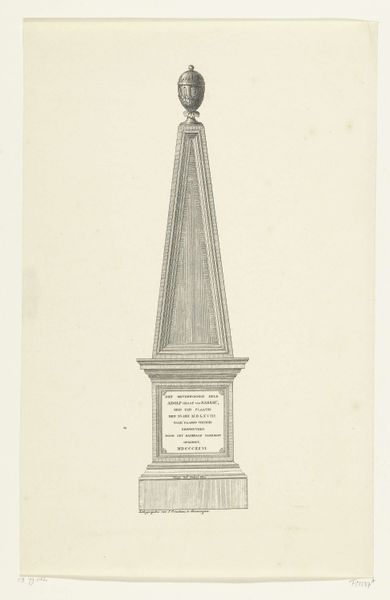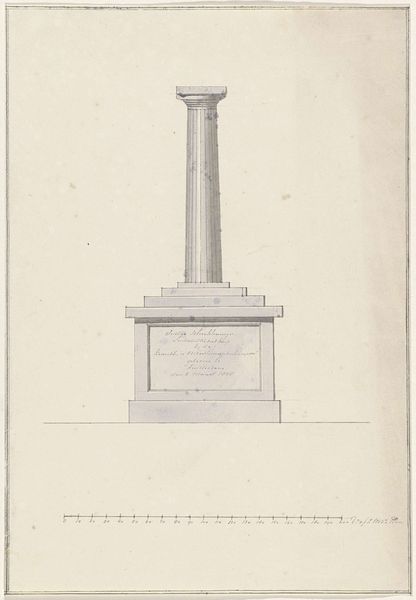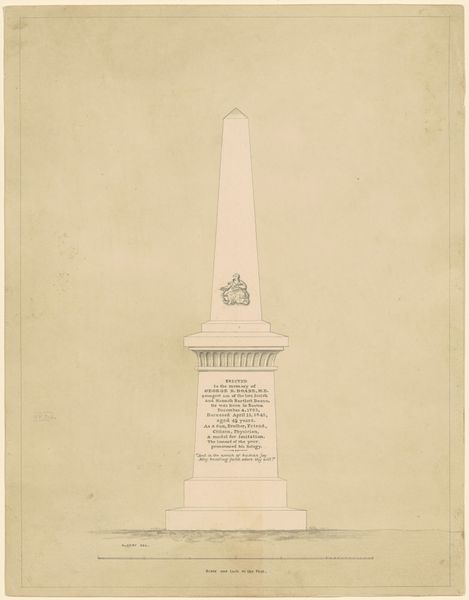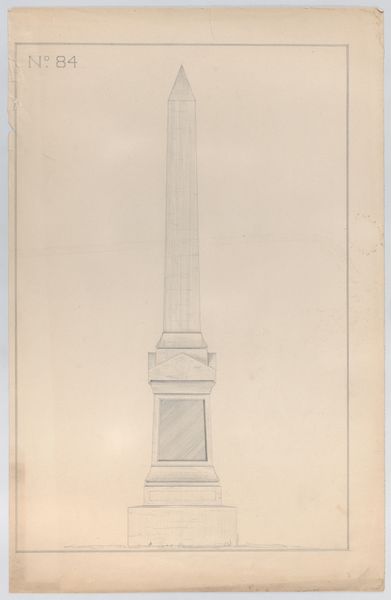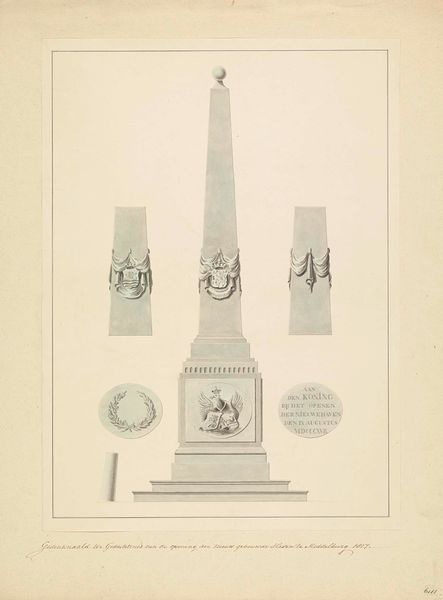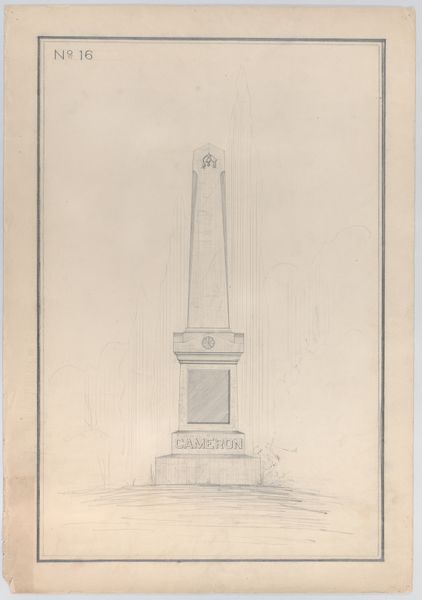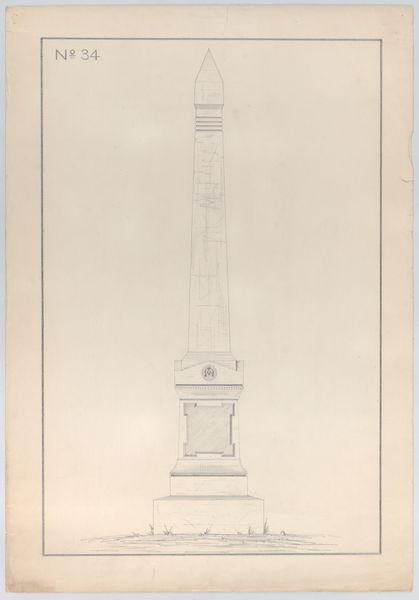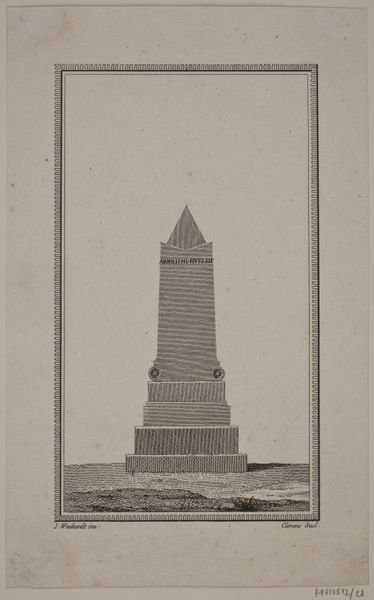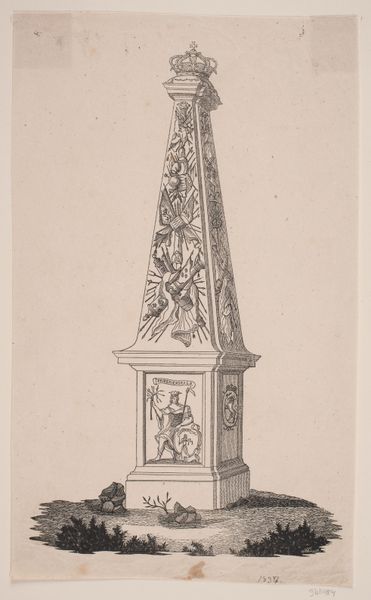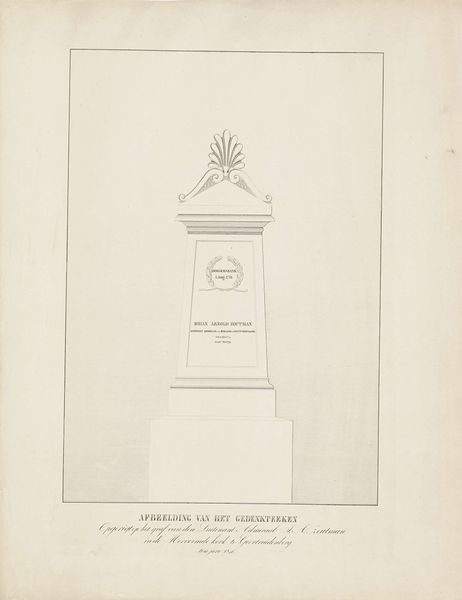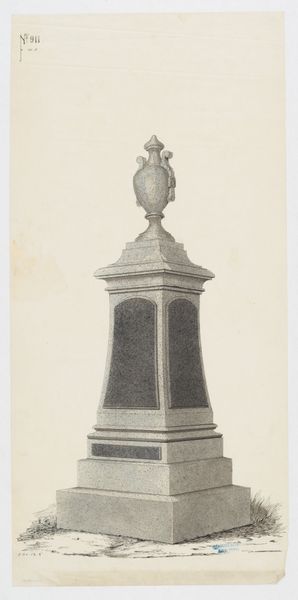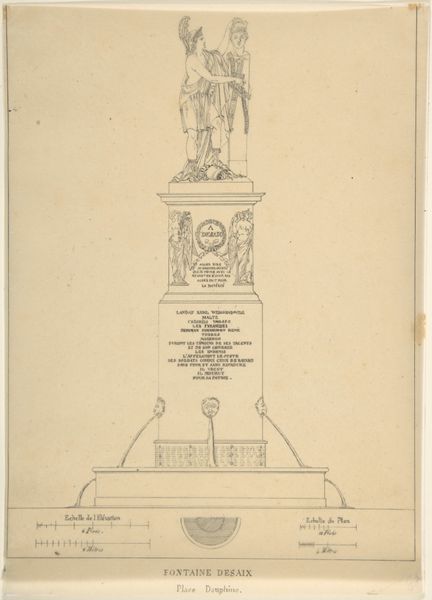
print, metal, bronze, sculpture, engraving
#
neoclacissism
#
statue
# print
#
metal
#
old engraving style
#
bronze
#
form
#
sculpture
#
line
#
pencil work
#
history-painting
#
engraving
Dimensions: height 382 mm, width 241 mm
Copyright: Rijks Museum: Open Domain
This print of a monument to Adolf, Count of Nassau, was made in 1826 by an anonymous artist. Obelisks like this were common in the 19th century, often erected to commemorate important figures or events, signaling a desire to solidify national narratives through public art. The monument, designed for Adolf who died in 1568, points to a moment of burgeoning national identity in the Netherlands after the Napoleonic wars. The Dutch sought to create a sense of continuity with a heroic, distant past. The choice of an obelisk, a form originating in ancient Egypt, connects the new Kingdom to a lineage of powerful empires, lending it an aura of timeless legitimacy. Understanding this image requires us to consider the political and social functions of public art. Exploring archives of the period, from newspapers to government records, might shed light on the social forces that shaped this monument. What was the public role of art in the Netherlands at this time? What political work did it do?
Comments
No comments
Be the first to comment and join the conversation on the ultimate creative platform.
